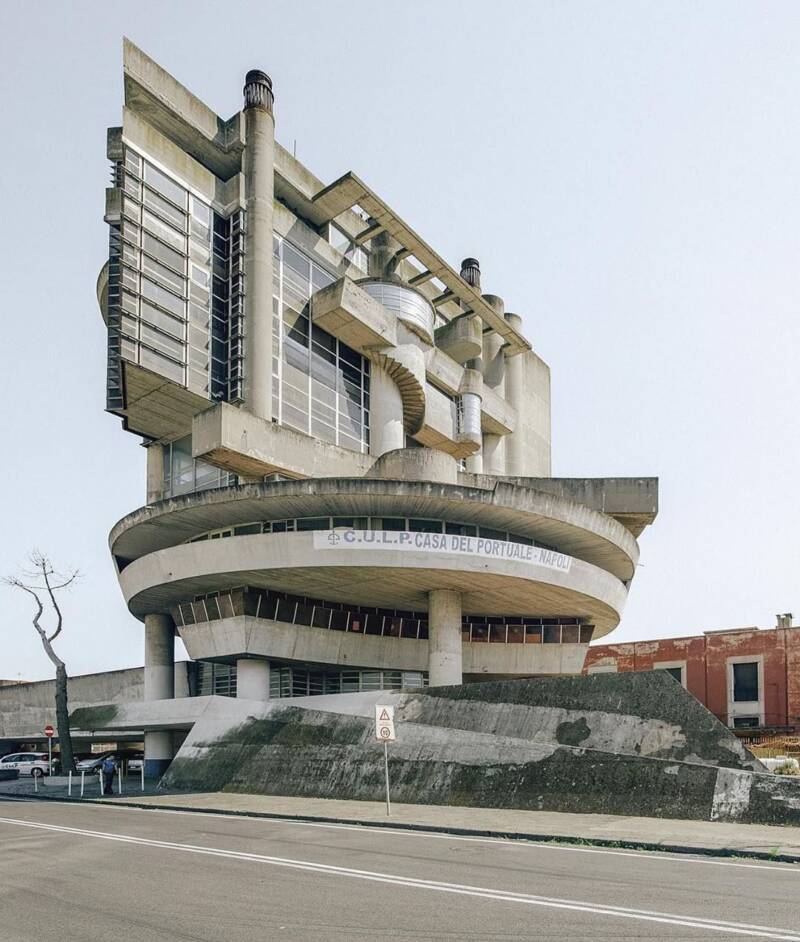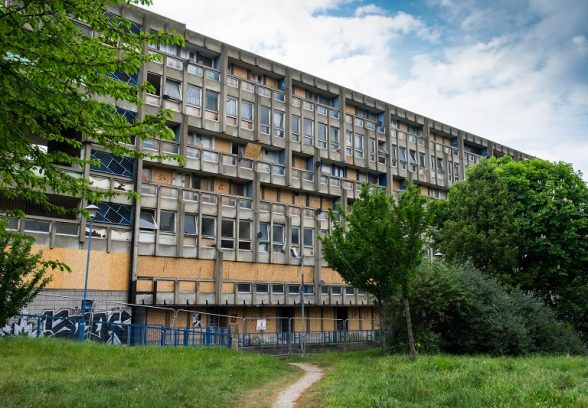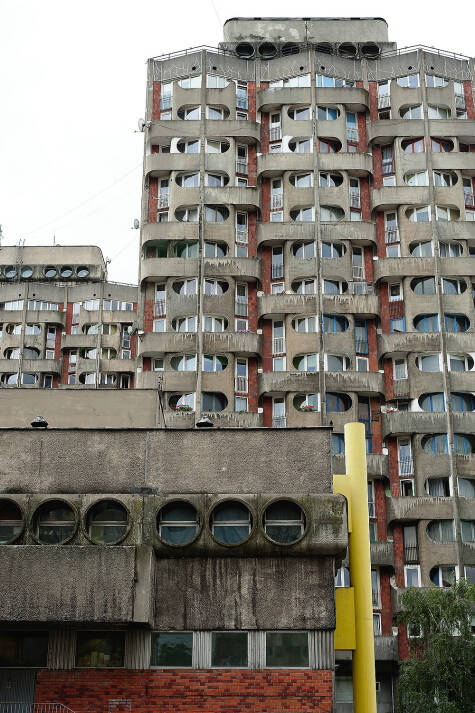Introduction: From Idealism to Uncertainty
Brutalist architecture, a stark and unadorned style of architecture, came about in the middle of the 20th century after World War II. People who supported it, including well-known architects Alison and Peter Smithson, thought that architecture could be a force for social good since they had a socialist and utopian vision. They wanted to build honest, useful, and cheap buildings for the masses by using raw, exposed concrete (béton brut).
Brutalist social housing was meant to be a tangible representation of this idea: a new way of living in cities that would alleviate the housing issue, bring people together, and lift up the working class. But for many of these projects, the idea of a concrete utopia quickly fell apart, leaving behind a legacy of urban ruin, social humiliation, and huge failure. This blog post looks at the most important reasons why this great ideal fell so far short of its lofty ambitions.
The Building Blocks of a Failed Dream: Utopian Ideas and Real-Life Problems
The brutalist movement was a direct response to the fact that there weren’t enough homes after World War II. The architects didn’t care as much about how the buildings looked as they did about how well they worked. They used cheap materials and modular designs to build skyscrapers on a scale never seen before. They imagined “vertical cities” that were self-contained and had communal areas and “streets in the sky” that would be like the social fabric of regular neighbourhoods. But this lofty attitude often ran into problems when it came to putting it into action.
One of the most obvious problems was that these lofty plans were not very realistic. The “streets in the sky,” which were elevated walkways meant to be public spaces for people to meet, often turned into dark, unmonitored hallways. These areas didn’t bring people together; instead, they attracted crime and bad behaviour, which made people feel alone and scared. The architects’ focus on huge buildings also made people feel like they were on the outside. People had a hard time connecting with their homes or their surroundings since the structures were so big and similar. These places felt chilly, impersonal, and cut off from the rest of the city since they weren’t designed for people.
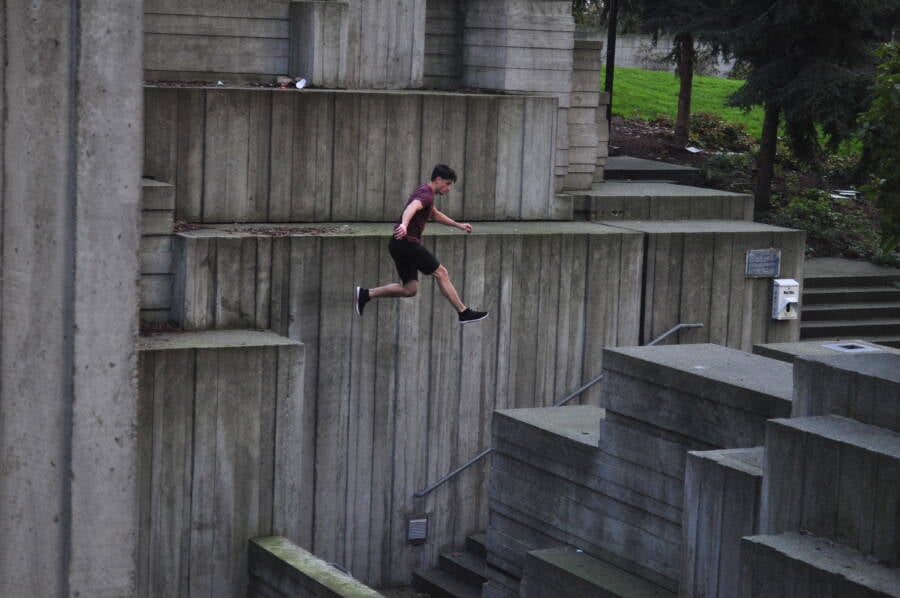
A man practices parkour in the Brutalist Freeway Park in Seattle, Washington.Joe Mabel/Wikimedia Commons
The Pruitt-Igoe Myth: A Case Study in Collapse
When talking about the failure of brutalist social housing, you have to talk about the Pruitt-Igoe housing complex in St. Louis, Missouri. Minoru Yamasaki designed it, and it was finished in 1956. At the time, it was seen to be a revolutionary way to solve urban poverty. But less than twenty years later, its demolition in 1972 became a sign of the end of contemporary architecture.
There were many reasons why the project failed. People typically blame its decline on bad architecture, but it was really caused by a perfect storm of social and political reasons. From the start, financial limitations forced Yamasaki to take out important features from his original concept, like public restrooms and playgrounds. The “skip-stop” elevators, which only stopped on every third floor to save money, pushed people to utilise stairwells that quickly became dark, dirty, and unsafe.
The city’s racist public housing regulations, which kept Pruitt-Igoe’s people separate from each other, were a major problem. Because of this plus the fact that St. Louis’s population and economy were both falling sharply, many white people left. This left the complex with a lot of empty apartments and a lot of low-income African American families living there. The housing authority couldn’t keep up with repairs since their budget was getting smaller.
The complex fell apart, with shattered windows, leaking pipes, and a lot of vandalism, which made it even more famous as a place where crime and filth thrive. The last broadcast collapse of its buildings was a stunning visual proof of a failing utopian dream.
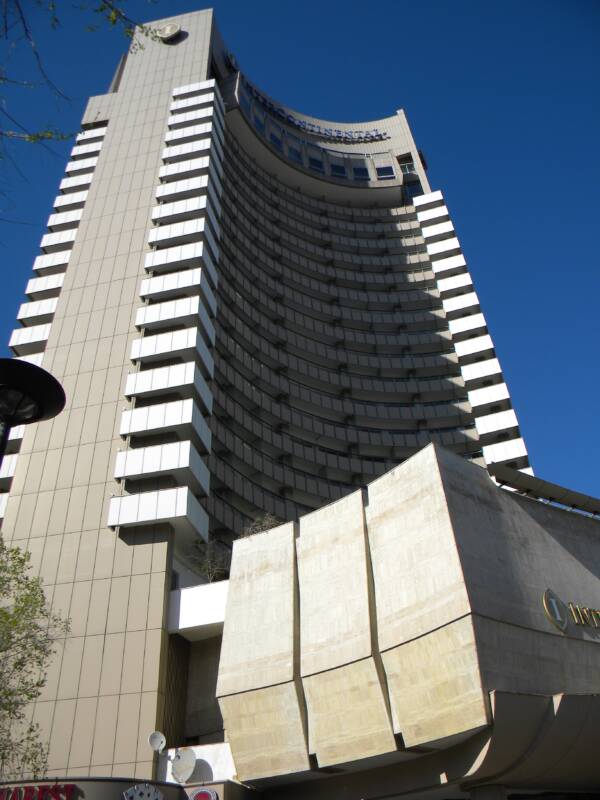
Hotel International in Bucharest, Romania.Britchi Mirela/Wikimedia Commons
Another Example Is the Tearing Down of Robin Hood Gardens
The Robin Hood Gardens estate in London had the same fate as Pruitt-Igoe. The complex was praised by critics but hated by many of its occupants. It was designed by the brutalist pioneers Alison and Peter Smithson. The Smithsons’ famous “streets in the sky” were built as raised pathways, but like their American counterparts, they didn’t work well and were often dirty, which meant they didn’t provide the lively community life they were meant to.
The building itself was poorly built and not well cared for. The raw concrete didn’t hold up well in the weather. It got rusty streaks from exposed rebar and looked dirty and soiled, which only added to the building’s negative reputation.
There was also a major road that separated the estate from the rest of the neighbourhood, which made inhabitants feel even more cut off. A lot of architects and preservationists worked hard to save the building, but most of its inhabitants wanted it torn down because of the bad living conditions and social problems. The final demolition of Robin Hood Gardens was clear evidence that the people who lived there thought the building’s looks were not as important as its problems.
Robin Hood Gardens, Poplar, Architect: London Alison & Peter Smithson
The Larger Reasons for Brutalism’s Decline
Even while each brutalist social housing project had its own problems, there were several problems that affected all of them around the world.
- Financial Neglect: Brutalism was appealing at first since it was cheap, but that wasn’t the case in the long run. The unusual shapes and materials were hard to take care of and cost a lot of money. Public housing authorities, which are generally short on money, didn’t have the money to take care of these structures adequately, which made them fall apart quickly.
- Material Flaws: The trademark exposed concrete turned out to be a problem. It could get stained, cracked, and spalled, and because it was porous, it could also get wet and mouldy. The stark, one-color look also made people feel chilly and sad, which many inhabitants found unpleasant.
- Social Stigma: People and the media called these constructions “concrete monstrosities” since they were linked to crime, poverty, and neglect. This stigma often made the social problems they were meant to fix worse, creating a cycle of disinvestment and abandonment.
- A Change in Ideas: By the 1980s, the utopian ideas of post-war social welfare were being supplanted by new political ideas that favoured privatisation and owning your own property. As public funding for housing went down, so did the political will to keep these huge estates in good shape or fix them up.
Plac Grunwaldzki, Wrocław, Poland, 1982.Kramar/SOSBrutalism
Conclusion: A Legacy of Unfulfilled Promise
Brutalist social housing was a bold attempt to utilise architecture to change society. These projects were born out of a real desire to make the world a better place. They attempted to develop a physical framework for a more fair society. But in the end, a mix of bad design, bad upkeep, social stigma, and the government’s disregard of the same populations they were meant to help brought them down. The spectacular implosions of Pruitt-Igoe and the plodding disintegration of Robin Hood Gardens are strong reminders that a building’s success is not only about how it looks or how much it costs, but also about how well it serves the people who live there.
For more blogs like this CLICK HERE!
References:
PressReader.com – Digital Newspaper & Magazine Subscriptions
The Rise And Fall Of Brutalism: Why This Controversial Architectural Style Is Back

